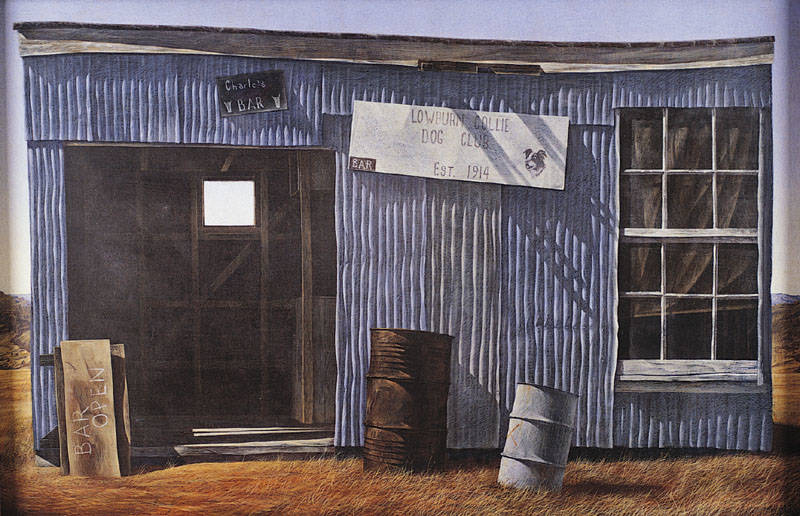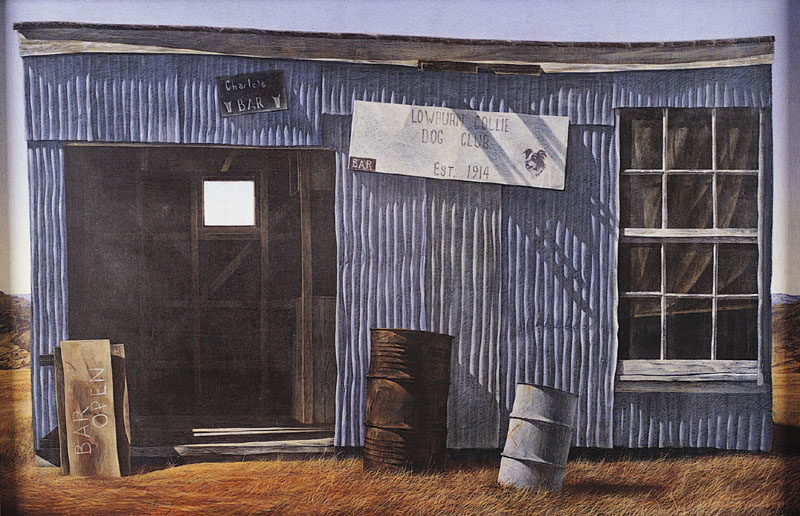SYDNEY, Grahame;
Charlie’s Bar
1977
Egg tempera on gesso on board
370 x 560mm


In admiring Grahame Sydney’s work only for its skill in execution and its resemblance to reality is to ignore the fact that his paintings are in fact just as carefully ‘composed’ and aesthetically ordered as any abstract or expressionist work. Sydney has said that he could teach anyone to paint as he does, but what he could not teach is the singular process of selection of objects, the choice of colour, the often peculiar use of space in his work. In Charlie’s Bar, the artist has isolated a run-down rural building from its surrounding landscape in order to concentrate exclusively on the essentials of its façade. The texture of its various decaying materials, the fallen ‘Bar Open’ sign, the empty metal drums, gives the sense that time has passed this building by and that its relationship to humanity is merely residual.
Sydney’s work, like that of Peter Siddell, may be accurately described as realist, in that there is a close resemblance between the scene we non-painters see out of the car window and the finished painting. But the best realism is far from being a re-duplication of reality. It is a mistake not to look deeper than the surface and to admire only the technique. Certainly, Sydney spent at least a whole month making the many tiny brushstrokes that make up the image. However, his paintings are, more tellingly, expressing sombre truths about the way the past impinges on the present.

Inscriptions
Grahame C. Sydney / 1977 [l.r.]References
Grahame Sydney, Brian Turner, and Owen Marshall, Timeless Land (Ōtepoti: Longacre Press, 1995), 37.
Provenance
?–
Fletcher Trust Collection, purchased via John Leech Gallery, Tāmaki Makaurau, from a private collection, Ōtepoti